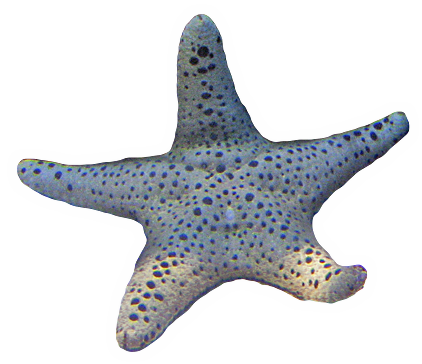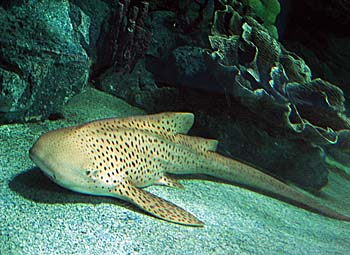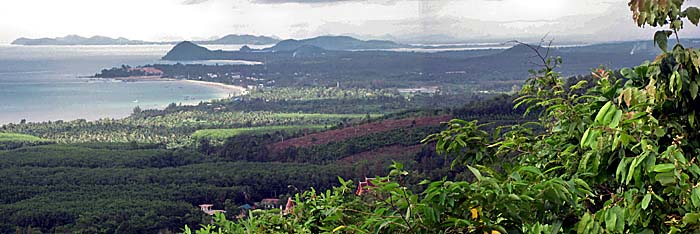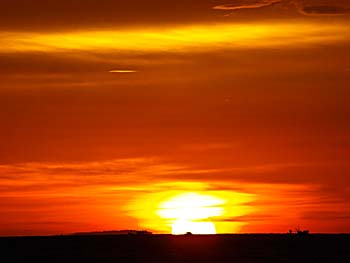
Geography
The Gulf of Thailand is part of the South China Sea and the Pacific Ocean. The Gulf's name in Thai is 'Ao Thai'; formerly called the 'Gulf of Siam'; in Malay the old name 'Teluk Siam' is still in use; the Khmer also still call it 'Chhoung Samut Siem'. The old Thai term is Ao Sayam.
A Leopard Shark

A leopard shark in the aquarium of Prachuap Khiri Khan. Image by Asienreisender, 2006
The littorial states are Thailand with a coastline of about 2,600km, a small part of Malaysia, the whole Cambodian south coast and the southern coast of Vietnam. A border can be drawn between Vietnam's southernmost point at Cape Bai Bung and Kota Baru at the Malaysian east coast. The whole sea covers an area of about 320,000km2. It's in average 45m deep, at the deepest point about 80m. That's relatively shallow, compared with the South China Sea which reaches as deep as 1,060m.
A number of rivers flow into the Gulf of Thailand. Namely Thailand's largest and central river, the Mae Chao Phraya leads closely south of Bangkok City into the sea. The Chao Phraya transports considerable amounts of silt and causes a land expansion at it's mouth. 19th century Bangkok's center (Rattanakosin Island) was closer to the Gulf of Thailand as contemporary Bangkok is now. Up to 20km offshore south of Bangkok the water's depth is merely eleven meters. Along the east coast of the Malay Peninsula, on the contrary, happens a considerable coastal erosion.
The Gulf of Thailand at Chumpon

Kilometers long sand beaches stretch along the Gulf Coast in Thailand. Often they are shaped in semi-circles. At the end/beginning of many semi-circles stands a limestone mountain. Image by Asienreisender, Chumpon, 2010
Due to the voluminous inflow of sweetwater and the slow drift in the Gulf the salt percentage in the Gulf of Thailand is lower than in the Pacific Ocean (3.05% to 3.25%, Pacific: 3.45%). At the border to the South China Sea is an deep sea stream flowing into the Gulf, transporting water with a higher salt proportion.
Map of the Gulf of Thailand

Ecology
The coral reefs of the Gulf of Thailand are endangered by global warming (water temperatures rise). The corals catch diseases and die at many places.
Many other species are endangered as well. Namely the last Irrawaddy Dolphins along the coasts of Trat and (maybe) in Songkhla Lake, the few remaining dugongs, Chinese White Dolphins and Eden's Whales are certainly going to extinct within the next years.
The long coastline of the Gulf was in the past mostly covered with mangrove forests. Mangroves are a very fertile habitat for a lot of species. They also protect the coast and the interiour from floods. In the last decades much of the vegetation fell victim to urbanization, logging and commercial purposes as shrimp farms in grand style. The future for the mangrove forests looks, as for all remaining natural habitats in our time, sinister...
Marine Life in the Gulf of Thailand
Marine Life

All images and photocomposition by Asienreisender, 2006, 2015
The aquarium in Prachuap Khiri Khan represents a small choice of the animals who live in the Gulf of Thailand.
Economy
Koh Tonsay

The Gulf of Thailand at Koh Tonsay (Rabbit Island), Cambodia. Every evening masses of fishing boats, including big trawlers, go out for fishing. Image by Asienreisender, 2014
Global warming, overfishing and massive pollution also impacts the fishing economy. There are offshore oil and gas deposits in the Gulf. They are partially in Thai waters, partially offshore the coast of Sihanoukville in Cambodia. Tourism rose in Thailand particularly after the American Vietnam War (Second Indochina War), in Cambodia since recently. At some parts along the coasts tourism is the most important part of the economy. Most notorious for mass tourism and sex tourism is Pattaya / Thailand, but also the island of Koh Samui. Sihanoukville in Cambodia is walking in the footsteps of Pattaya.
The coasts of the Gulf of Thailand are partially dotted with islands, but there are not many islands, compared for example with the Andaman Sea.
Some of the naval areas are under dispute among the littorial countries. Particularly the Vietnamese island of Phu Quoc close to Kampot is claimed by Cambodia.
The Industrial Port of Sihanoukville / Cambodia

Sihanoukville has yet the biggest port in Cambodia. Offshore of the place are oil and gas deposits who will be exploited in the next years. A new, bigger port in Kampot Province is under construction. Image by Asienreisender, 2014